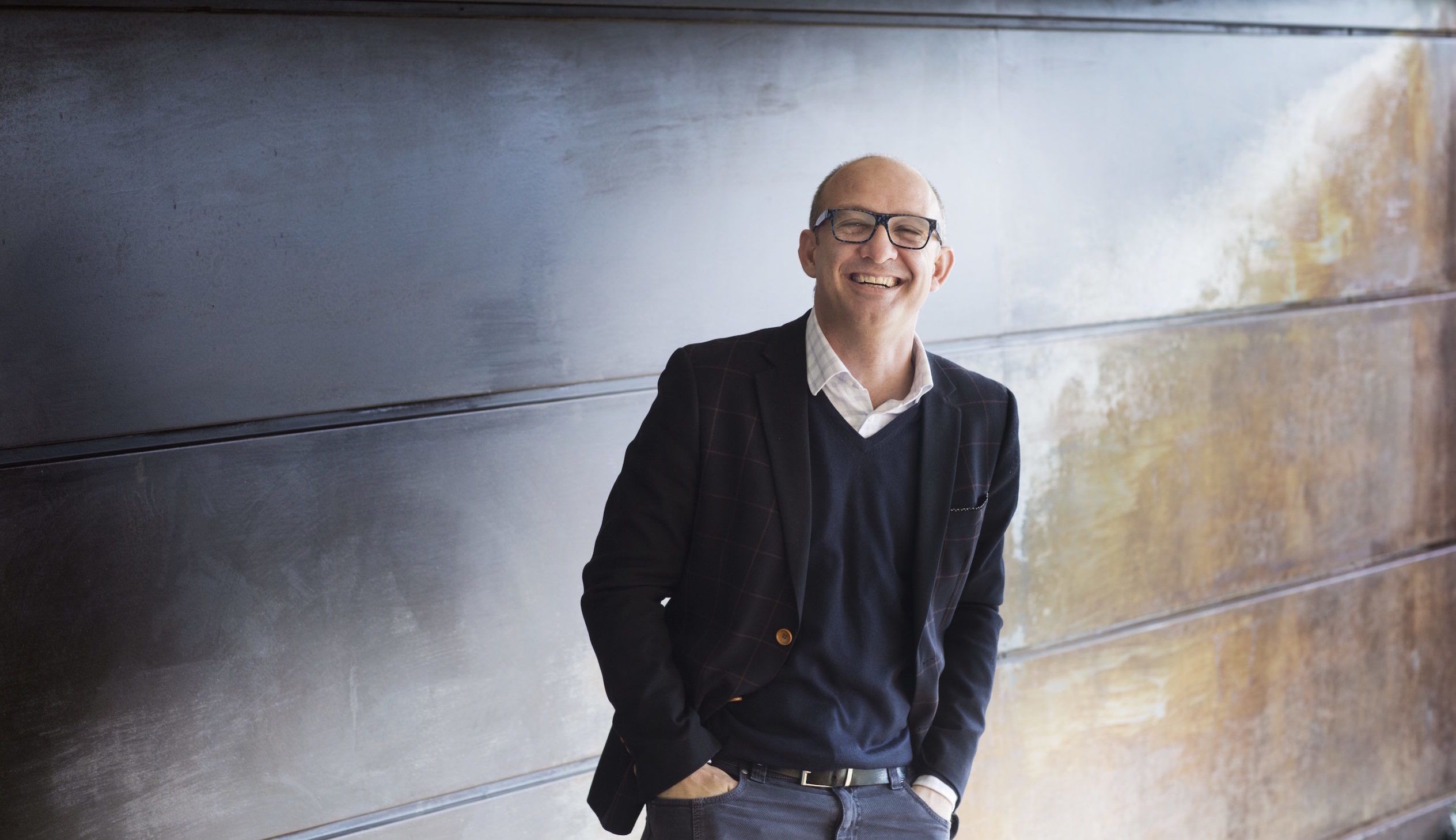“2004 broke my heart. I can still remember today our tasting notes – how Burgundian, floral, exquisite, delicate, tasting 2004 from the cask, but then this delicacy turned into fast ageing in bottle, 2004 started as a primadonna and then went down in condition,” Federico Ceretto
When a wine is a described as having ‘perfect balance’, it means that all major components – acidity, fruit, tannin, alcohol and residual sugar – are working in harmony together and nothing sticks out awkwardly on its own. Tasting four of the top wines from Ceretto from the 2016 vintage there is undeniably great balance here. In fact, I cannot remember tasting a new vintage of Piemonte that has such a vibrant energy paired perfectly with a ripe, concentration of fruit. And the tannins are exquisite and so approachable.
Make no mistake Barolo and Barbaresco in 2016 are simply unmissable, and what’s more the production levels are high.
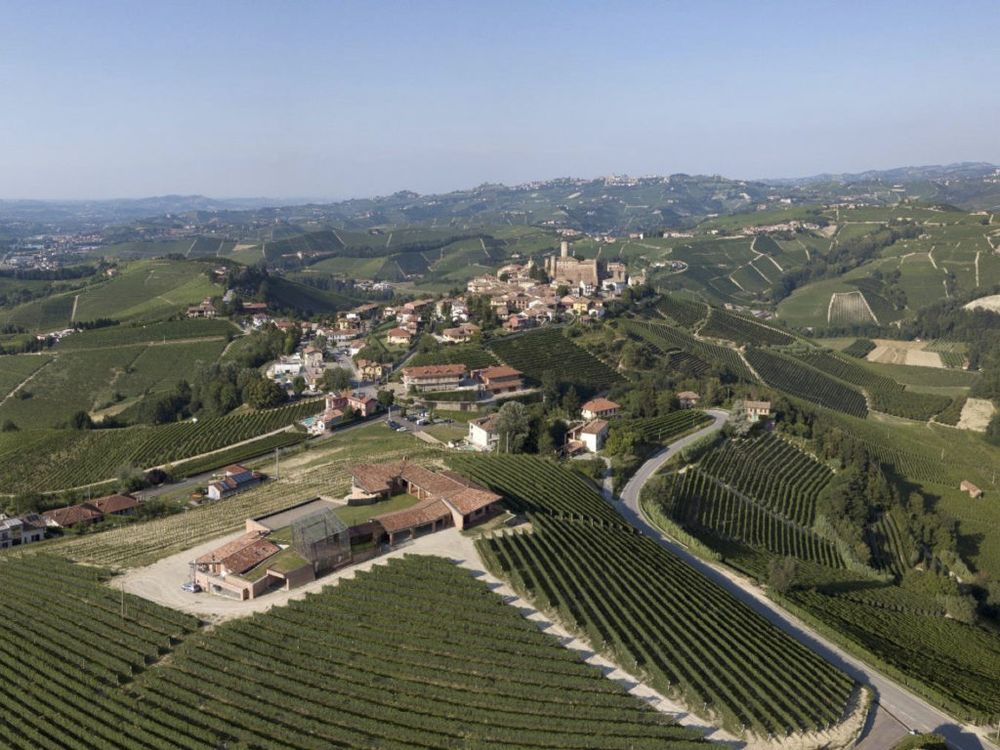
The vineyard at Bricco Rocche
Federico Ceretto, co-owner of the 130 hectare estate Ceretto, agrees calling it “The best vintage of the past 20 years – this is a vintage that has balance and classicism.”
When he begins to explain what made 2016 so remarkable it was one diagram in particular which showed rainfall and temperature for each vintage over the past 20 years that showed simply how one major component of balance in wine is ultimately linked to balanced rain and heat during the growing season.
The arrow shows where the new 2016 vintage is – with the right interaction between heat and rainfall. The graph also illustrates clearly where the other great vintages of the past 20 years are in Piedmont – 2004 and 2010.
“What you can also see here is the contrast between Mediterranean vintages and 2003 and 2017 that are almost African – super dry vintages that will change completely the production of the wines – the characteristics of the grapes (phenolic maturation for example) will be completely different,” Ceretto explains.
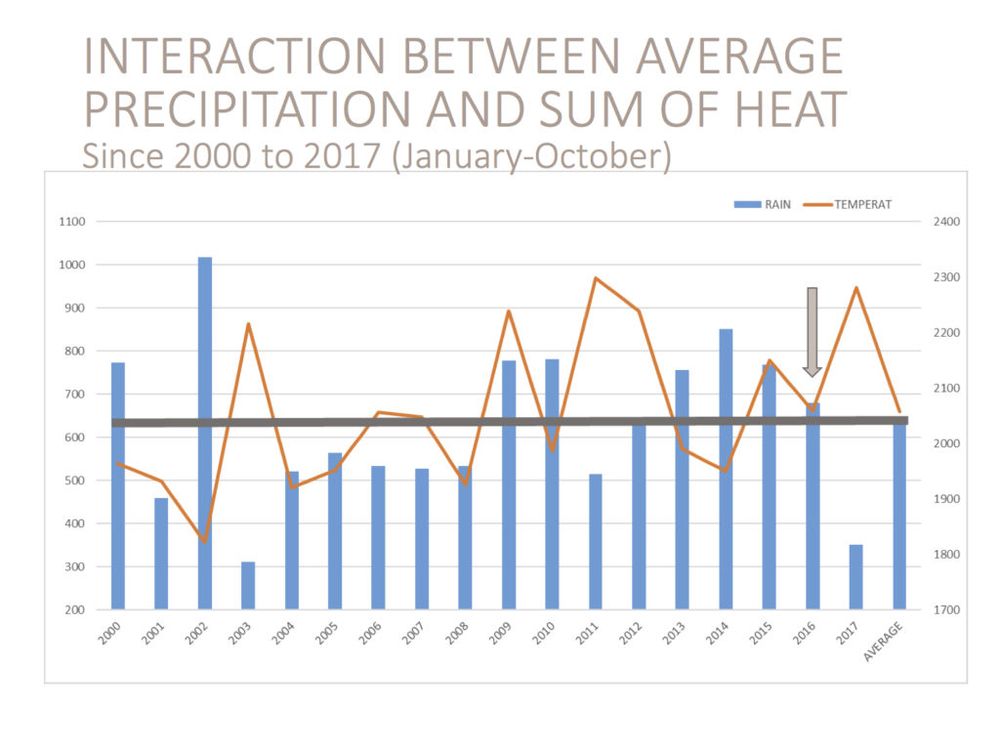
“ When we have perfect balance – water and heat – at harvest time we feel that condition of grapes are perfect. You will see complexity in the wine but in the glass I have the perfect interpretation of the conditions of the harvest.”
2004 and 2010 – two outstanding vintages from the past two decades – also had perfect weather, so why does Ceretto think that 2016 is superior?
“With 2010 and 2016 I consider them to be really, really close – in 2010 Barolo was magnificent but Barbaresco less so, I can name better Barbaresco vintages, but with 2016 everyone’s super happy we have a great harvest in the whole region.”
With 2004 Ceretto says it is what has happened to the wines since they’ve been bottled that marks them down in his opinion.
“2004 broke my heart. I can still remember today our tasting notes – how Burgundian, floral, exquisite, delicate, tasting 2004 from the cask, it was magnificent but then this delicacy turned into fast ageing in bottle, the tertiary aromas arrived quickly – the evolution was very quick – 2004 started as a primadonna and then went down in condition.”
If 1989 was a major leap for Piedmont, 2016 represents another major leap, he believes.
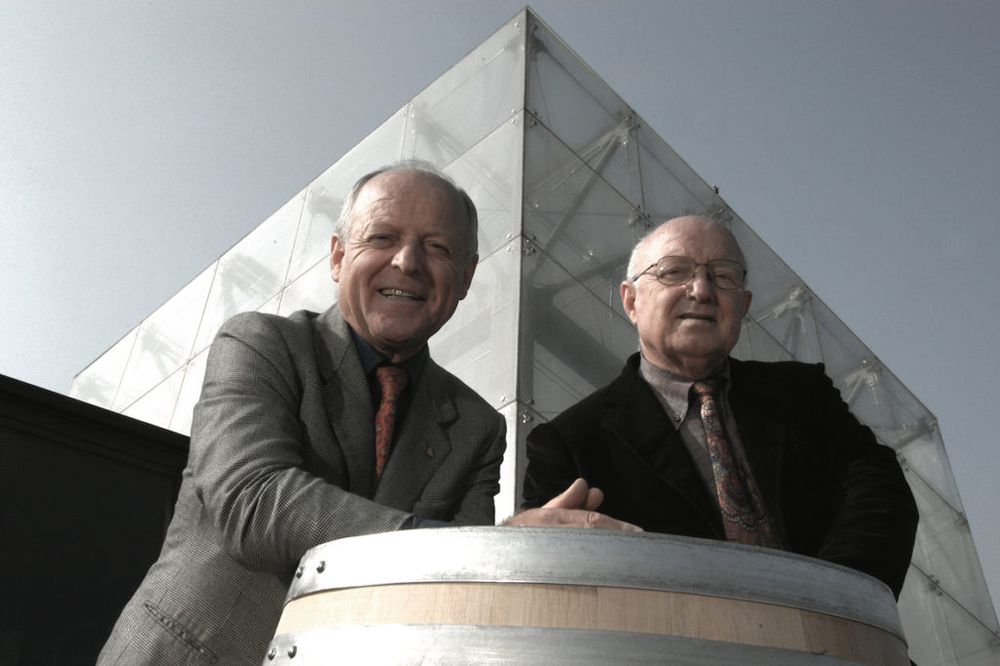
Bruno and Marcello Ceretto: Federico’s father and uncle, credited for changing the winery to a Burgundian model
Other key factors influencing the vintage are the style of agriculture, style of winemaking and ability of the winemaker to cope with hot conditions better – all of which have improved over the past 20 years. Referring to the traditional-versus-modern battle that dominated the region in his father’s day, Federico says:
“Like Picasso we had a blue moment… we had the ‘barrique moment’ we experimented with everything – 100%, 80% everything – but it doesn’t make sense because you end up putting your ‘dream’ into the bottle it’s a manipulation of the profile of the wine.”
Ceretto explains how his generation has effected a compromise. His estate uses barrique for 6 years and then buys new oak – depending upon the size of the new harvest – so there is a 10-20% turnaround of barriques each year. The wine is then aged for 18-20 months in 20-30 hectolitre large casks. In this way they can fix the brightness of the wine and the colour, “not a concentrated aubergine colour”.
“You see, a bit of make-up on the wine is not necessary, our job is to be precise, but perfection is very complicated to achieve.”

Tasting the 2016 wines
Another recent change has been converting the entire estate over to fully sustainable (uncertified) biodynamic agriculture across four sets of appellations governing Barolo, Barbaresco, Arneis and its hazelnut fields for the Nocciola Tonda Gentile delle Langhe (of which Ceretto has 40 hectares) and across the company’s four wineries. Apart from the pride he has in achieving this in just a decade, he explains how with biodynamic farming you can achieve an earlier harvest (“to lower a little bit this wall of tannins”) without picking up green tannins in the process.
“A great wine is when you get the vintage and the vineyard in the glass.”
Ceretto was established 90 years ago and single vineyard wines have been a central part of its philosophy for the past 60 years when Federico’s father and uncle managed to persuade him to change the focus of the estate after visiting Burgundy. This terroir-focussed approach is wonderfully expressed in three of the four wines we taste: Barolo Brunate 2016, Barolo Bussia 2016 and Barbaresco Bernadot 2016. Interestingly, bringing the Langhe into the terroir concept is a relatively recent development.
“We took notes from Burgundy and we only started to make fine wines in Piedmont in the last four or five generations and we only really started to make distinguished fine wines about 60 years ago. My generation, we had the privilege of being able to make wines with consciousness.”
And so on to tasting the wines themselves

Barolo 2016
The family or estate Barolo, whose first vintage was 1962 and is made from parcel selection across the four villages of La Morra, Castiglione Falletto, Barolo and Serralunga d’Alba. Fermented in steel tanks, it spends 12 months in 300l French oak barrel (5% new), 24 months in 25/30 hectolitre big cask and then 12 months in the bottle.
Light brick, exquisite nose, some complexity and concentration, floral, forest fruits, fresh black fig, aniseed lift on the tail; so welcoming on the palate, soft even, a chalky quality, then the ‘hidden’ structure becomes more apparent; raspberry, blue plum, ripe cherry, a hit of creaminess. Beautifully balanced, medium bodied Barolo and amazingly approachable given its youth. Textbook elegant-style Barolo.
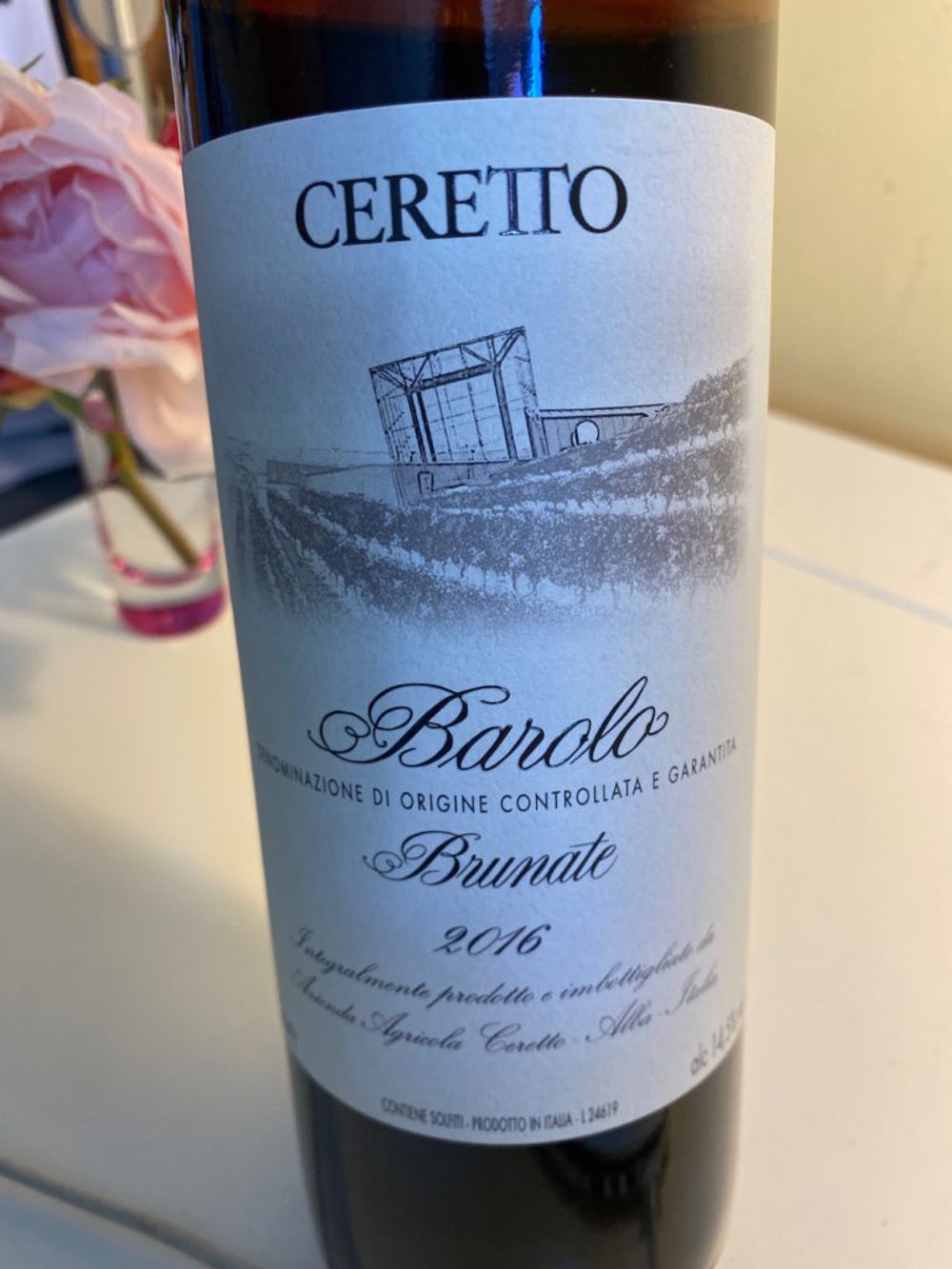
Barolo Brunate 2016
One of the most famous of the Barolo crus of which Ceretto owns 25 South-facing hectares, spread between two villages, picking the right time to harvest is key here as the fruit can easily go into over-ripeness because of the orientation. The lower parts of the vineyards go into the estate Barolo, the higher slopes into Barolo Brunate.
Mid-ruby; there is a good deal of spicy power on the nose, nutmeg, mulberry, tobacco with a touch of iodine and red rose; more textural than the estate Barolo, but they are velvety-fine, ripe tannins coming from the silt soil; Flavours are darker (forest fruits), touch of blackberry Chewit, and there is a more intense broody character. Long, dry finish. So approachable to drink now. Apparently a good match with meat and various fish.

Barolo Bussia 2016
Although the Bussia NGA was extended from 190ha to 300ha in 2009 and 2010, Ceretto is keen to point that this single vineyard cru comes from the Bussia Soprana, the historical heart of the vineyard which, with its amphitheatre creates a unique microclimate. In recent years many more smaller producers are making single selection and reserve wines reflecting this diversity.
Mid-ruby; more savoury and dark spices on the nose, mocha, black chocolate; The palate is super silky, with fine-grained tannins, a delicate, textured grain on the tongue, hits of saline; Nice and fruity, bright, with a creaminess mid-palate and a finish which is a little more curt than the Brunate with an appealing blood orange tartness.

Barbaresco Bernadot 2016
At 480 metres, this is the highest vineyard in Barbaresco, steep and South-East-facing. The family bought this monopole vineyard in 1994, replanted it with the first vintage being 1997.
Mid ruby: Delicate nose, floral aromas (fresh violets), five spice, fresh earth; In the mouth the wine has fabulous balance between soft elegance and structure – much more powerful acidity from the altitude and a good deal of minerality too; Fresh, ripe red and black fruits, Morello cherry finish. Fabulous wine – approachable now but will reward time. Apparently a great match with Peking duck.
Post Script
One aspect of tasting wines in lockdown is that one can take much longer over analysing them. Several critics, such as Bordeaux expert Jane Anson, have mentioned that they are liking this aspect and that they think their tasting notes are better as a result.
I opened the Ceretto wines at 10am and tasted them at 12, they then sat there as I wrote this feature and I tasted them throughout the day. What was interesting was how the differences in terroir were immediately apparent just through the nose, and the differences on the palate just grew and grew throughout the day with the class of the single vineyard wines becoming more and more apparent. These are supremely elegant ‘smart’ wines, with supreme balance. Drinkable now but they will last for decades.
The Ceretto wines are imported and distributed in the UK by Mentzendorff. Find out more about them here.
